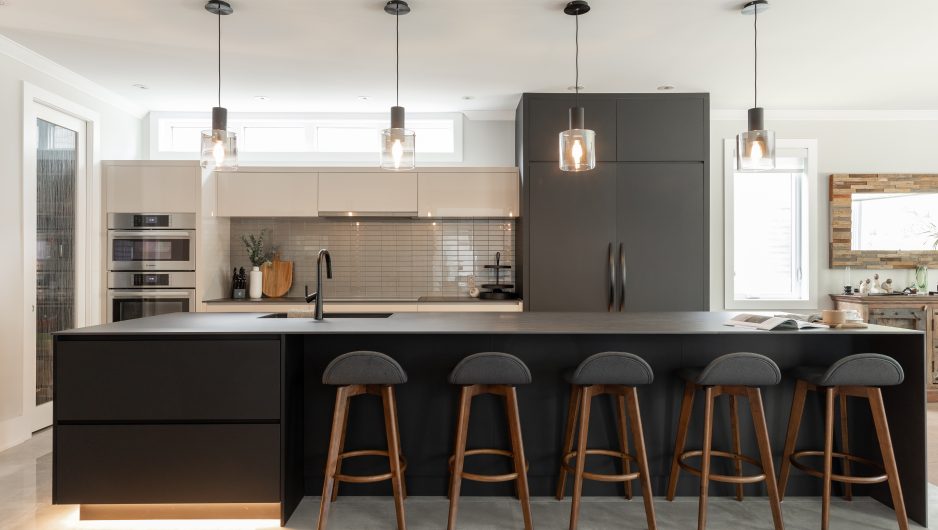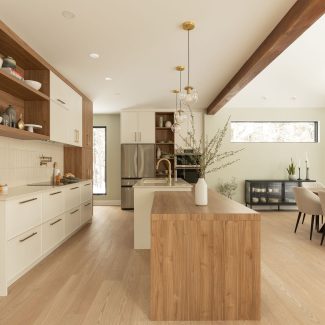Creating a kitchen that combines functionality and aesthetics is a complex and fascinating undertaking. Lighting, the centerpiece of this alchemy, should not be underestimated. It goes far beyond its simple role of illuminating a space; it’s the tool that shapes ambience, defines work zones, highlights details and creates a universe of visual possibilities. In this lighting exploration, we’ll delve into the various types of kitchen lighting, each representing an important facet of the desired ambience.
1. Main lighting
Meticulously positioned on the ceiling according to the custom configuration of kitchen elements, main lighting is the backbone of the lighting ambience. It aims to provide even, well-distributed light throughout the room, offering adequate general visibility for getting around and carrying out basic tasks. In addition, it offers a unique opportunity to accentuate details, making cabinet doors and the entire kitchen shine in a visual symphony. Ceiling, suspended and wall lights are often used for this function, illuminating the entire kitchen evenly.
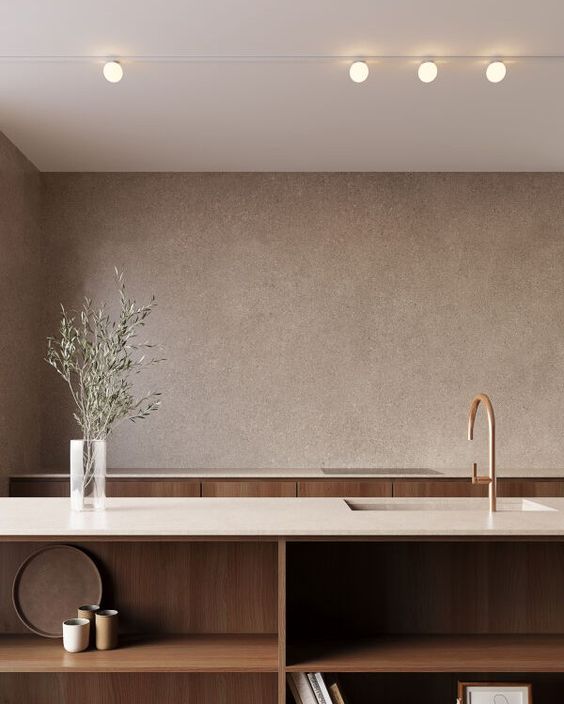
Source: Pinterest
2. Task lighting
Accent lighting, whether recessed spotlights under tall cupboards or LED strips, subtly animates the play of light and shadow, creating an enchanting lighting ambience for darker moments. It’s the perfect companion for convivial evenings and moments of relaxation, adding an extra touch of warmth to the space.
Did you know?
Degrees Kelvin (K) are used to describe the hue of light, ranging from warm (yellow tones) to cool (blue tones).
- Less than 3,500 K: a warm light source evoking a warm, soothing atmosphere. Ideal for relaxation areas such as living rooms and bedrooms.
- Between 3,500 K and 4,500 K: neutral light source often used in kitchens, offices and bathrooms, offering a light that enhances without distorting colors.
- Above 4,500 K: a cool light source providing bright, vivid illumination. Preferred in workspaces, garages and areas requiring excellent visibility.
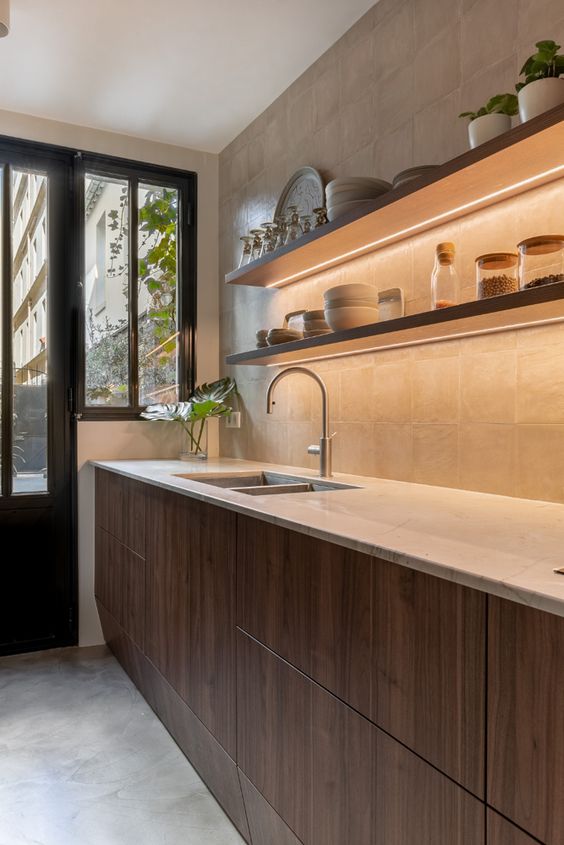
Source: Pinterest
3. Ambient lighting
Creating a comfortable atmosphere by definition, mood lighting is used to generate a hushed, elegant environment. It can be adjusted to create different moods according to need and occasion, whether it’s a private dinner party or a gourmet evening. The subtle interplay of light and shadow brought to life through glass casings is a 2024 trend that is currently taking shape, thanks in particular to fluted glass. Accent lighting can also be found under the contours of counters, following the flow of cabinet kicks and highlighting the contours of decorative shelves. It becomes an integral part of your daily routine, adding an extra touch of warmth to the space.
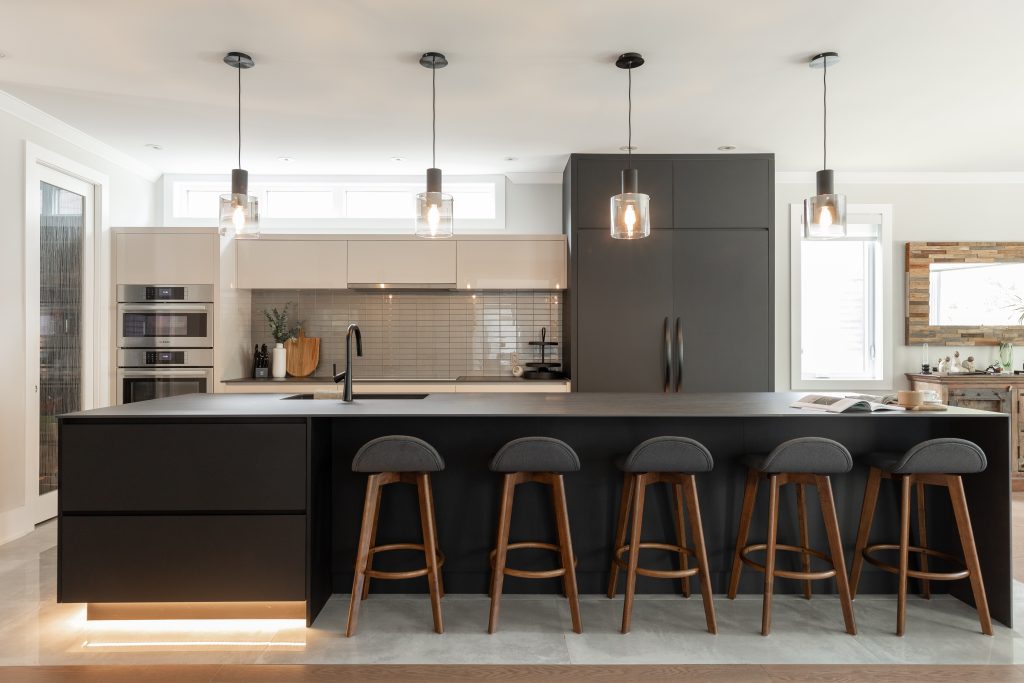

By skilfully combining these three facets of lighting, the custom kitchen becomes a canvas where functionality and style merge. Each type of lighting contributes to creating a space that adapts to the needs of the moment, while embodying the personalized elegance that characterizes a meticulously designed kitchen. Consider enlisting the support of a Macucina kitchen designer to assist you in the design of your kitchen, and get personalized advice on the best lighting for the job.
